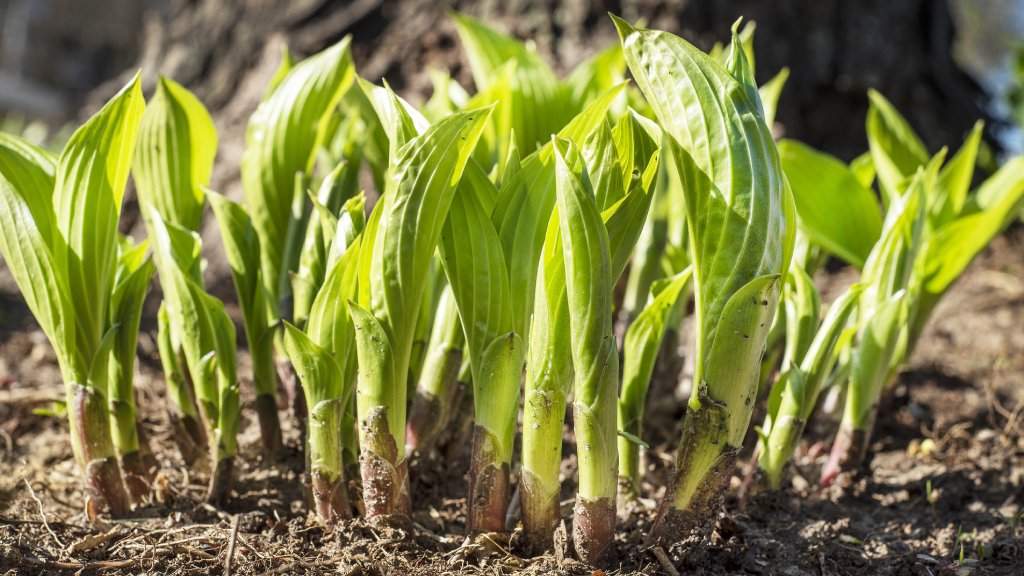Are Hostas Edible? How To Harvest & Eat A Perennial Favorite
Are hostas edible? Amazingly, they are not only edible but highly nutritious. But they are poisonous to pets, so be sure to follow directions carefully.


While they do pretty up the garden, are hostas edible? The hosta plant is a shade to partial shade foliage plant with little fairy-like purple to white flowers. Hostas grow from rhizomatous roots and begin to produce tightly furled leaves in early spring. Eating hostas isn’t a well-known culinary experience but it is supposedly a delight. Edible hostas span all the varieties, but the Montanas are said to be the tastiest.
Can You Eat Hostas?
I used to have a huge hosta garden which even included a prized Empress Wu. I now live where it is too hot and dry to grow these glorious forage plants, but I wish I had known then what I know now.
Many popular web searches ask, “Are hostas poisonous?” Usually, the question refers to protecting curious pets. The glycoside saponins do make the leaves toxic to certain animals, like cats and dogs. Though many gardeners can attest that deer and rabbits love the taste of their hostas.
But can you eat hostas? The answer is a resounding “yes.” In Japan, the plant has been harvested for centuries and is called “sansai,” or mountain vegetable. Hostas are said to be similar to asparagus, so they have to be good!
How to Harvest Hostas to Eat
It’s important to source hosta leaves that have not been exposed to chemicals like herbicides or pesticides. The young leaves called “hoston” are the best part. These are the early shoots that curl up from the soil in spring. The older leaves are edible but may be tough and bitter.
Harvest the plants in the morning for the best taste. Using a sharp knife, take the leaves at the soil level. You can also simply pinch off leaves. The smaller leaves on the outside are more bitter than the inner leaves. You can also harvest hosta flowers. These are purported to have a mild pepper flavor. Always wash any foraged foods thoroughly before using them.
How to Prepare Hostas
Treat the leaves like lettuce or spinach when eating hostas. After washing them and drying them you can use them in a variety of ways. They may be kept whole or the individual leaves divided away from the cluster. Young hoston leaves may be chopped into a salad. Thicker hoston may be pan-seared or gently braised. Stir fry the smaller ones and add sesame oil and soy sauce. Whole, larger hostas can be boiled.
Sign up for the Gardening Know How newsletter today and receive a free copy of our e-book "How to Grow Delicious Tomatoes".
The leaves have a slightly bitter flavor that pairs well with sweet, smoky flavors. The addition of garlic or other allium masks some of the bitterness. Hosta flowers are best fresh, tossed in a salad or used as an edible garnish.
Storing Hosta Hostons
The leaves can be stored for 2 days in the vegetable crisper drawer. Wash them and let them air dry. Then layer them with paper towels in a plastic tub or baggie. They are best fresh and will get wilted if they are allowed to sit in the refrigerator for more than a couple days. If you wish to use them like frozen spinach, blanch the chopped leaves, let them dry, and freeze them.
Frequently Asked Questions
Are all hostas edible?
All varieties of hosta are edible but not all have the best flavor. Hosta fortunei is said to be one of the best tasting. All the cultivars of Montana are said to be delicious.
What are the health benefits of eating hostas?
Hostas have been traditional folk medicine, primarily in Asia. There are 101 beneficial compounds found in the plant. These might have anti-inflammatory, cancer-fighting, and analgesic properties. The plant has quite a bit of potassium, phosphorus, calcium, magnesium, manganese, and zinc. It is low in fat and contains fiber. The slightly bland flavor picks up other flavors in recipes making it a perfect stand-in for leafy greens.

Bonnie Grant is a professional landscaper with a Certification in Urban Gardening. She has been gardening and writing for 15 years. A former professional chef, she has a passion for edible landscaping.